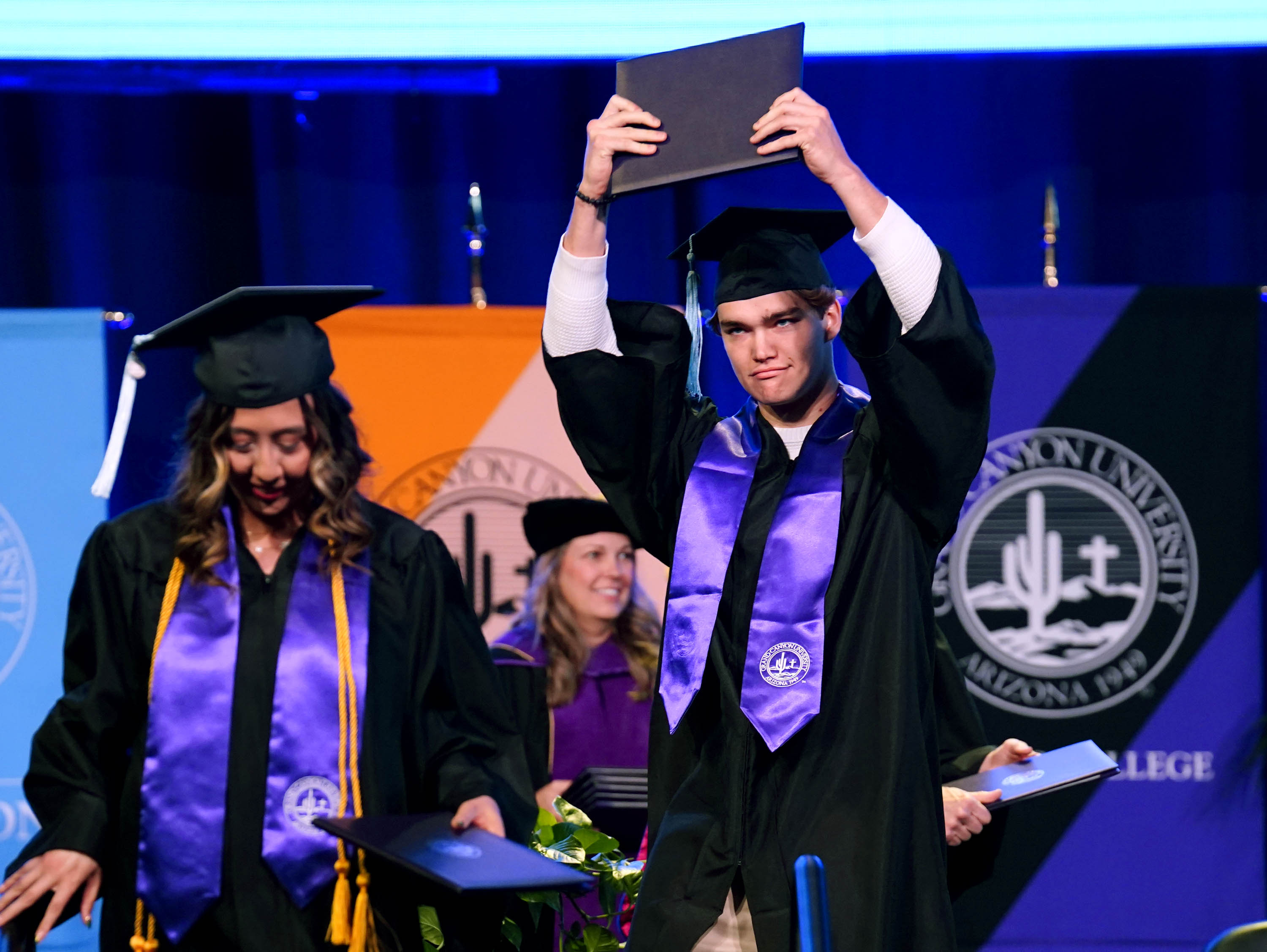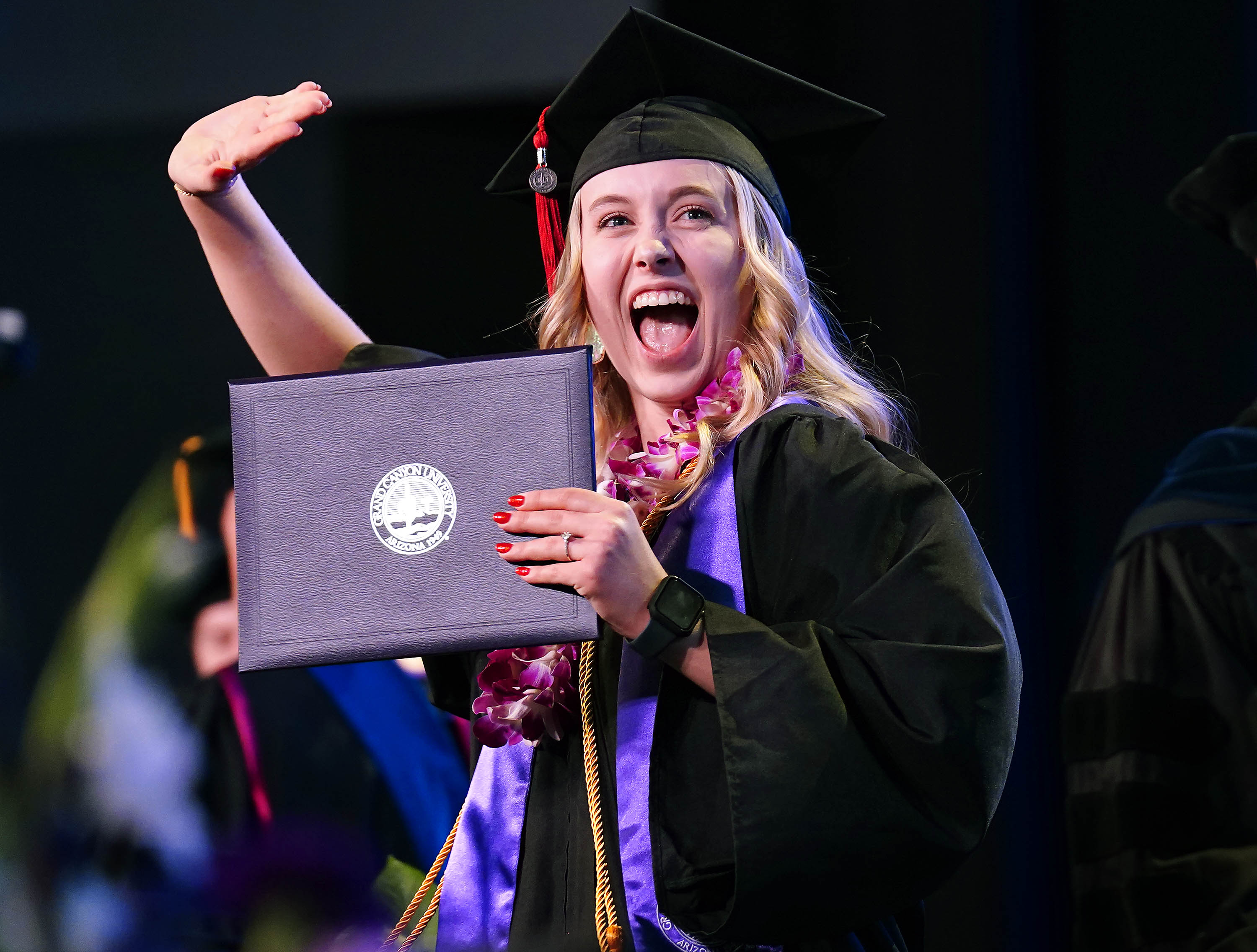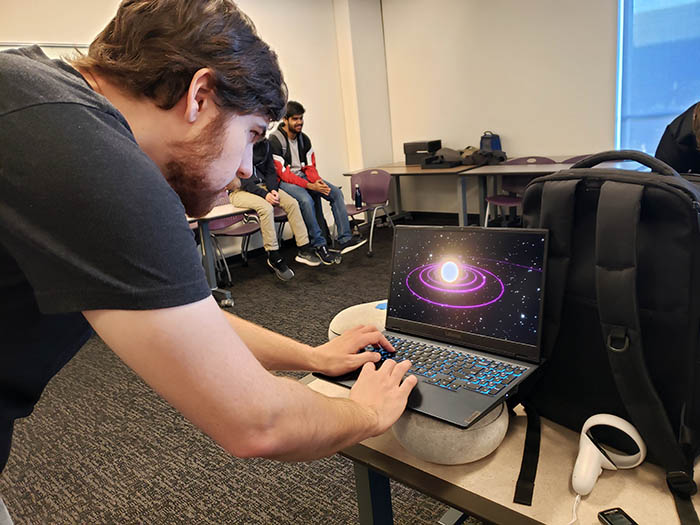
By Lana Sweeten-Shults
GCU News Bureau
Ground control: We’ve landed on Earth.
We see something in the distance – a creature of some kind. Approaching. Stand by.
Creature confirmed. It appears to be a dinosaur.
Ground control, we are OUT of here. Headed to portal …
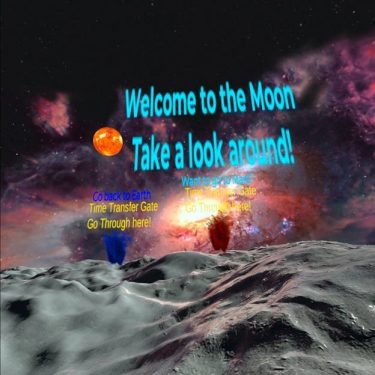
Planet Earth, time of the dinosaurs, complete with a few soccer balls nearby just for fun, is one of the stops on the solar system-themed virtual reality project of Grand Canyon University juniors Adam Abrams-Flohr, Omar Elsayd and Andrew Millam. The idea is this: You’re a great adventurer who is planet- and moon-hopping your way through the universe, picking up a soccer ball or a moon rock here and there as you hurl yourself from place to place via a blue smoke portal.
The solar system project was just one of several student projects on display Wednesday during a virtual reality mini showcase for Dr. Isac Artzi’s junior-level CST-320 class, or as students like to call it, the virtual reality class.
Pre-COVID-19, the VR showcase was a regular end-of-semester event, but it hasn't happened over the past year and a half.
“I wanted to renew the tradition,” said Artzi, as professors, campus leaders and students milled about a second-floor classroom in the Technology Building. They popped in and out of a gaggle of virtual reality headsets to immerse themselves in the various worlds and games created by the students.
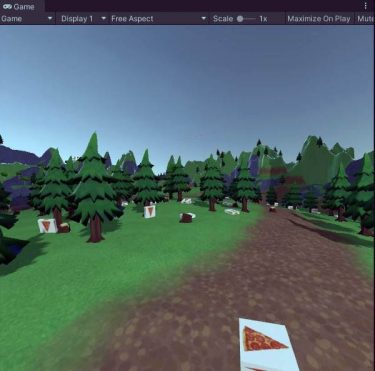
Once the headsets are on, you can “walk” through a virtual park, approach dinosaurs with a push of a button, admire a place where pizza DOES grow on trees, and experience a fun, spooky beach carnival, as is the case in the student projects.
“We started with a lot of ideas. Originally, we wanted to do kind of a room full of breakable objects where you just go in and you smash everything. But we kind of thought that we could do more with this than just that -- more than just, you know, wanton violence, even though, who doesn’t like a little bit of wanton violence?” Abrams-Flohr said with a smile.
He and his team started with a spinning sphere that they made look like Earth, “and we were like, what if we made this into a full solar system? We were like, what if we took this solar system and made it interactable, made it possible to go down to Earth, explore the surface of Earth and then go to the moon and explore the surface of that, and then Mercury, Venus, Mars?”
The guys readily see their project being more than just a fun adventure through the solar system. They’ve planted a seed for what could become something teachers might use in their classrooms or, given a little more time than just the 14 weeks of the class, something that might become part of a science museum tour.
The Earth dinosaur scene, for example: “How about we make a history class that teaches the history of the Earth before humans?” asked Elsayd, a big data analytics major who also competes on the men’s swimming and diving team.
The project inspired an offshoot project by Abrams-Flohr in which a user can follow the orbital trajectories of the planets.
“It’s meant to render orbital paths realistically, so it uses real physics and real math to find the actual orbital trajectories of all the planets. It renders why they go in a particular direction, that sort of thing,” he said.
Elsayd’s favorite part of the project: just getting to create the various environments.
“The ground I made, and all the shapes in here, I made it from scratch,” he said, explaining how he made the soccer balls (using computer graphics software called Blender).
But he also loved making the dinosaur, though he couldn’t make it move like he wanted.
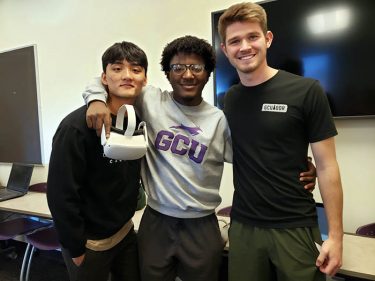
“That’s a sphere collider,” he said, pointing to a sphere shape under the dinosaur. “When I tried to make it move, it wasn’t walking straight. If I had more time, I would have figured it out."
Big data analytics majors Kyle Luster and Chris Zhou, along with junior entrepreneurship major Talbert Herndon, decided to go the game route and created a physics escape room. The goal is to make it through various levels and, ultimately, escape the room.
Players can pick up blocks and place them on pressure plates to open doors, for example.
“The reason I wanted to do this is to really explore the physics and mechanics of virtual reality and really key in on moving objects, falling objects, gravity,” Herndon said. “We wanted users to be moving doors, pressing down pressure plates, picking up blocks. We wanted to really explore the physics, so that’s what you really get to see in this game.”
Not that the game wasn’t without its challenges.
Luster said, “The most challenging thing, I would say, is getting the VR headset to cooperate with the Unity application. Sometimes our (virtual reality) hands didn’t match up with our hands in real life.”
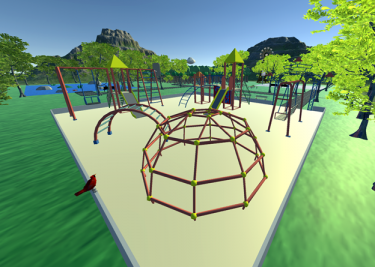
Paige Mabbitt, a sophomore computer science major with an emphasis in game design, was excited to take CST-320 because virtual reality is a a new technology she's excited to learn.
She and her team decided to skirt a gaming project and instead created a park experience, much like Abrams-Flohr, Elsayd and Millam created a planetary experience.
In their 3D-rendered park world, anyone donning a VR headset can explore a lake, a playground, forest and basketball court and can interact with various objects.
The park experience was inspired somewhat by the pandemic, when everyone kept to the confines of the four walls of their homes. The theme for the project was “Imagine.”
“We were, like, 'What if you could visit places that you know and are familiar with, but in your headset?'” Mabbitt said.
It would be of value to people who for some reason can’t get outside. The program whisks them away to a familiar place.
“During 2020, it would have been great to visit a virtual park … just being able to visit somewhere you normally would visit in real life in virtual reality because, for whatever reason, you can’t visit in real life.”
Virtual reality experiences have exploded since Artzi and his classes started exploring VR a few years ago.
Back then, a single headset cost a few thousand dollars. Just a few years later and you can find, say, an Oculus Quest 2 for $300 at the local Target.
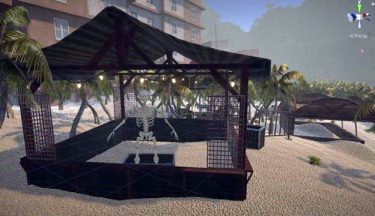
“Students know more about what virtual reality can do,” Artzi said, even though it’s likely they haven’t deep-dived into the technology as much as this class does.
Many of the students have zero knowledge of many of the programs they used to create their various games and VR experiences.
Abrams-Flohr said he and his team learned everything from the design aspects of Unity to the C Sharp computer language, along with quite a bit of graphic design and animation aspects.
“For most of them, it was the very first time they tried the technology. That’s the amazing part. Everything you saw here is 3½ months (away) from zero knowledge,” Artzi said.
Mabbitt agreed that the learning curve was high in this class.
“When we started this, we had next to no knowledge about the program that we were using,” said Mabbitt, the only female VR programmer at the showcase. “I knew next to nothing about Unity, which was the program it (the park experience) was developed in, and that learning curve of knowing nothing to creating an almost fully fledged project was insane, but it was super rewarding.”
These types of projects are something the College of Science, Engineering and Technology hopes to share as the college awaits the opening of an augmented reality/virtual reality lab. The lab is in the design stage and is tentatively scheduled to open in the Technology Building by fall 2022.
GCU senior writer Lana Sweeten-Shults can be reached at [email protected] or at 602-639-7901.
***
Related content:
GCU Today: GCU hits enter on new Technology Division deans
GCU Today: Virtual museum, other VR projects exhibit promise
GCU Today: Students capstones showcase creativity, tech savvy

